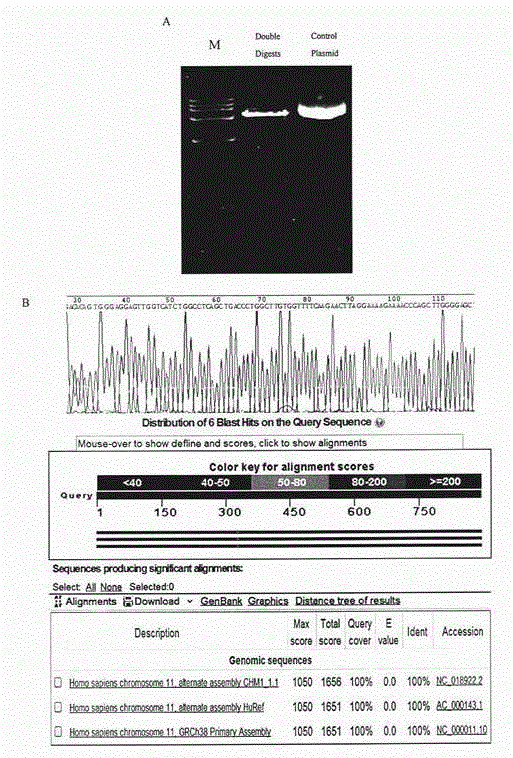Human cervical carcinoma metastasis relevant new long chain non-coding RNA sequence, separation method and uses thereof
A human cervical cancer, a new long-chain technology, applied in the field of tumor molecular biology, can solve the problems of diagnosis and gene therapy, lncRNA non-conservation, etc.
- Summary
- Abstract
- Description
- Claims
- Application Information
AI Technical Summary
Problems solved by technology
Method used
Image
Examples
Embodiment 1
[0039] Example 1: Preliminary screening of new genes related to cervical cancer by bioinformatics
[0040] cDNA xProfiler using the Cancer Genome Profiling Project CGAP platform with the US National The BLAST and DDD (Digital Differential Display) tools of the NCBI platform of the Biotechnology Information Center jointly screened.
[0041] 1) Use the cDNA xProfiler tool of the CGAP platform:
[0042] Pool A selects all cDNA libraries related to cervical cancer;
[0043] Pool B selects all cancer and non-cancer cDNA libraries except cervical cancer.
[0044] 2) Select 100 unknown EST sequences from the differential comparison results of the cDNA library and compare them in the Genbank database to exclude known repetitive genes and genome contamination sequences. The fragments with non-specific bands were amplified by PCR in the 9 EST sequences, and the C3 fragment was left for RACE to amplify its full-length sequence ( figure 1 ).
Embodiment 2
[0045] Embodiment 2: PCR amplification full-length gene
[0046] 1) Prepare and extract human cervical cancer cell RNA;
[0047] 2) Using RNA as a template to synthesize a 3'RACE cDNA template, use the following primers to perform PCR to obtain a 3'RACE product;
[0048] 3' RACE primer 3C3 nucleotide sequence of C3 such as sequence in the table SEQ ID No.2;
[0049] 3' RACE nested PCR primers for C3: 3C3N nucleotide sequence such as sequence in the table SEQ ID No.3
[0050] 3) Synthesize 5'RACE cDNA template using RNA as a template, and use the following primers to perform PCR to obtain 5'RACE products;
[0051] The 5' RACE primer 5C3 nucleotide sequence of C3 such as sequence in the table SEQ ID No.4;
[0052] C3 5' RACE nested PCR primer 5C3N nucleotide sequence such as sequence in the table SEQ ID No.5;
[0053] 4) By splicing 5'RACE and 3'RACE sequences, the full-length sequence was obtained.
[0054] According to the conventional RACE method, prepare RACE-re...
Embodiment 3
[0055] Example 3: Obtaining the full length of lncRNA-C3 gene and construction of eukaryotic expression vector
[0056] Design PCR primers to amplify the full length of lncRNA-C3, add BamH I and Hind III restriction sites to the primers, and connect the resulting fragments to the pcDNA3.1(+) eukaryotic expression vector, see the nucleotide sequence of the amplification primers Nucleotide sequence Form S EQ ID No.2, No.5. The amplified fragments were inserted into the pcDNA3.1(+) eukaryotic expression vector after conventional digestion, ligation and other operations. The obtained recombinant plasmid was digested with double enzymes ( image 3 A), DNA sequencing to determine ( image 3 B), the result shows that the recombinant plasmid is correct and can be used for follow-up research.
PUM
 Login to View More
Login to View More Abstract
Description
Claims
Application Information
 Login to View More
Login to View More - R&D
- Intellectual Property
- Life Sciences
- Materials
- Tech Scout
- Unparalleled Data Quality
- Higher Quality Content
- 60% Fewer Hallucinations
Browse by: Latest US Patents, China's latest patents, Technical Efficacy Thesaurus, Application Domain, Technology Topic, Popular Technical Reports.
© 2025 PatSnap. All rights reserved.Legal|Privacy policy|Modern Slavery Act Transparency Statement|Sitemap|About US| Contact US: help@patsnap.com



